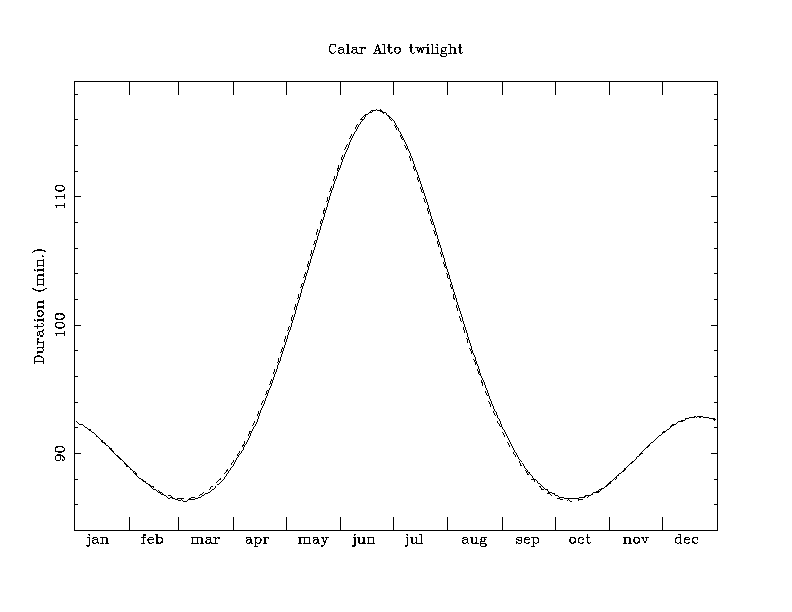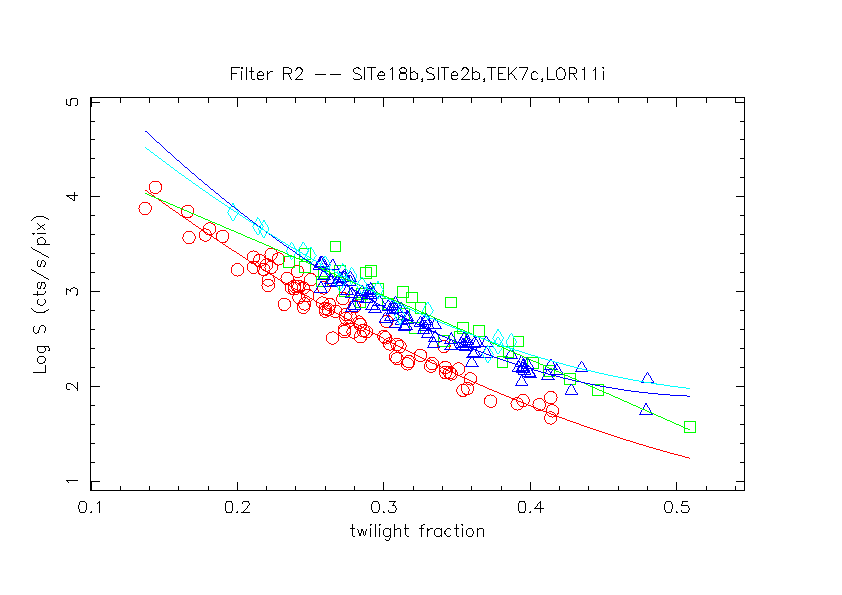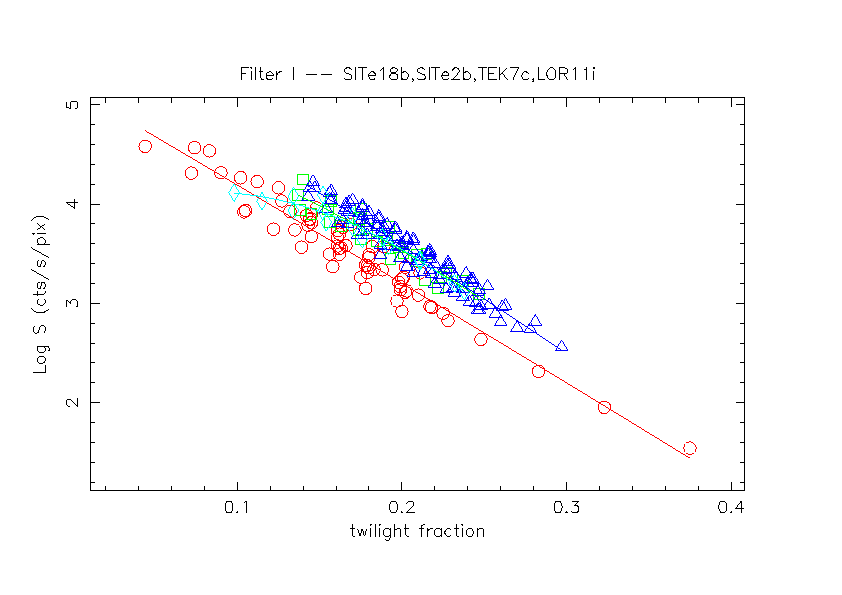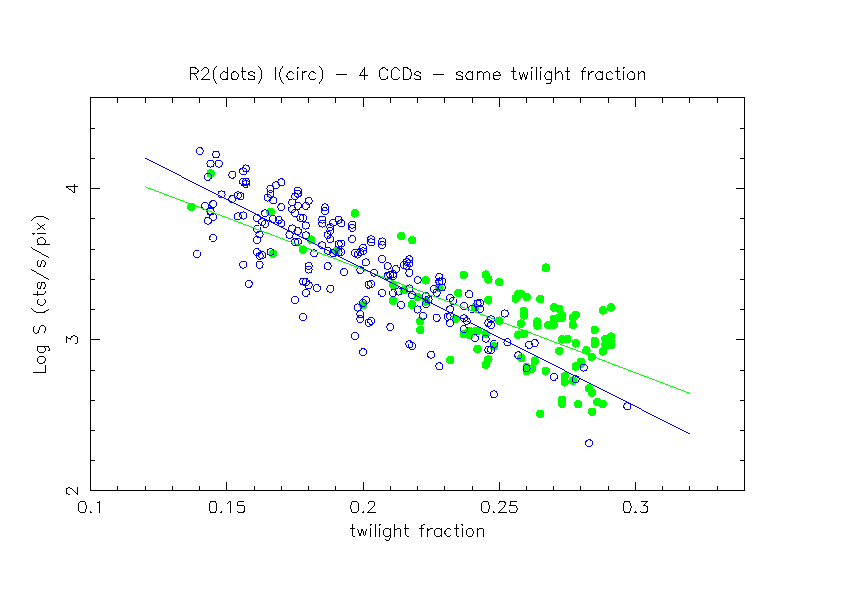




| CCD | Filter | N Images | C | K | res1 | res2 |
|---|---|---|---|---|---|---|
| SITe 18b | R2 | 83 | 5.045 | -8.353 | 0.119 | 0.109 |
| SITe 18b | I | 67 | 5.190 | -9.950 | 0.141 | 0.142 |
| SITe 2b | R2 | 32 | 4.977 | -6.738 | 0.128 | 0.130 |
| SITe 2b | I | 29 | 5.383 | -9.296 | 0.106 | 0.108 |
| TEK 7c | R2 | 87 | 4.847 | -6.641 | 0.102 | 0.081 |
| TEK 7c | I | 109 | 5.721 | -10.704 | 0.099 | 0.100 |
| LOR 11i | R2 | 18 | 5.243 | -7.500 | 0.078 | 0.066 |
| LOR 11i | I | 16 | 4.986 | -7.353 | 0.102 | 0.074 |

| Filter | N Images | C | K |
|---|---|---|---|
| R2 | 220 | 5.07 | -7.32 |
| I | 221 | 5.34 | -9.27 |